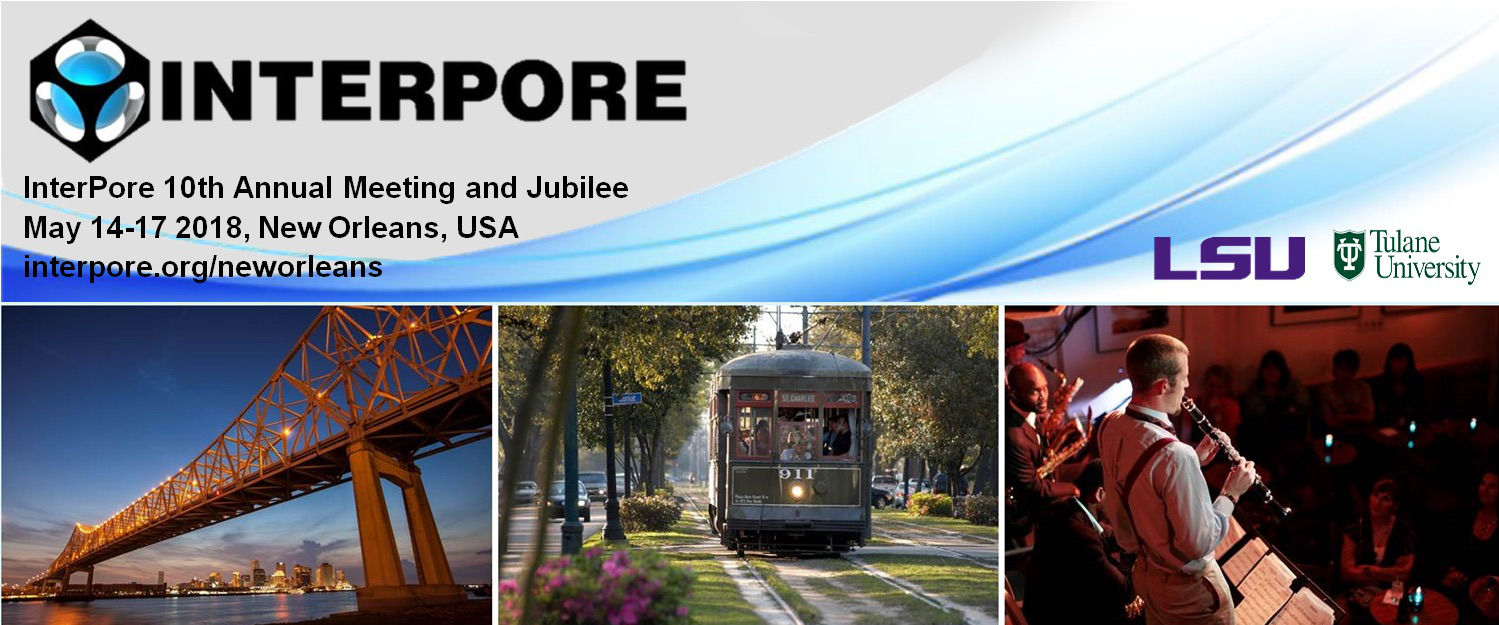Speaker
Description
In mechanized tunneling, grouting mortars are necessary for the backfilling of the annular gap, which is the cavity between the surrounding soil and the lining segments. An adequate grouting mortar should ensure a force-fitting connection in order to minimize surface settlements above the tunnel lining. The specific application prescribes two contrary requirements towards the rheology of the mortar mixture. On the one hand, a sufficient workability (low viscosity) is necessary for pumping the complex fluid through pipes into the gap, while this requirement can be fulfilled by starting with a high water content in the mixture. On the other hand, a rapid evolution of the mortar’s stiffness has to be ensured as soon as possible, which is usually initiated by a consolidation process. However, in the case of nearly impermeable soils, the dewatering process of the mortar would be too slow. The innovative concept of adding super absorbent polymers (SAPs) as an additive to the mortar mixture accelerates the gelation process. SAPs have the ability to absorb large amounts of the aqueous pore liquid in the mixture depending on the specific polymer characteristics and the chemical composition of the pore liquid. The SAPs swell to a hydrogel, while its mechanical properties differentiate tremendous from both the dry polymers and the free liquid.
In this contribution, the multiphase material is modeled within a continuum mixture theory based on the Theory of Porous Media (TPM). On the macroscale, the material is described as an immiscible mixture of three-phases. The solid phase represents the porous skeleton, while the pore space is simultaneously filled with a pore liquid and a hydrogel. Exchange terms in the mass balance equations for the phases account for the phase transition process on the macroscale, while the driving force for mass exchange has been modeled in accordance to well-established results in polymer physics. Both the chemical composition of the liquid phase and the properties of the hydrogel determine the absorption capacity and the dynamics of water migration. Since chemical processes are involved, the multi-phase framework has been extended to a multi-species one. To this end, the pore liquid as well as the hydrogel are miscible mixtures of species. A strict exploitation of the entropy inequality according to the concept of Lagrangian multipliers proposed by Liu-Müller leads to admissible, thermodynamically-consistent constitutive models. The modeling parameters in the proposed mass exchange formulations have been identified by carrying out experimental swelling tests. Moreover, the reversible water absorption and desorption underlines the functional characteristics of the material. Modifying the composition of the pore liquid, e. g. the concentration of solved ions, affects the swelling properties strongly, while modeling predictions are in accordance to experimental results. Finally, the phase transition process, i. e. the swelling and deswelling of the SAPs, is coupled with the rheology of the mixture on the macroscale. Therefore, the mechanical properties of the mixture and the internal mass exchange are linked by the evolution of the internal state variables in the model.
References
\bibitem{Alexandersson2016}
M. Alexandersson, H. Askfelt and M. Ristinmaa.
Triphasic Model of Heat and Moisture Transport with Internal Mass Exchange in Paperboard.
\textit{Transport Porous Med},
\textbf{112}:381-408, 2016.
\bibitem{Ristinmaa2011}
M. Ristinmaa, N.S. Ottosen and B. Johannesson.
Mixture theory for a thermoelasto-plastic porous solid considering fluid flow and internal mass exchange.
\textit{Int J Eng Sci},
\textbf{49}:1185-1203, 2011.
\bibitem{Bennethum2002b}
L. S. Bennethum and J. H. Cushman.
Multicomponent, Multiphase Thermodynamics of Swelling Porous Media with Electroquasistatics: I. {M}acroscale Field Equations.
\textit{Transport Porous Med},
\textbf{47}:309-336, 2002.
\bibitem{Sauerwein2017}
M. Sauerwein and H. Steeb.
A modified effective stress principle for chemical active multiphase materials with internal mass exchange.
\textit{Geomechanics for Energy and the Environment},
\textbf{under review}.
| Acceptance of Terms and Conditions | Click here to agree |
|---|


